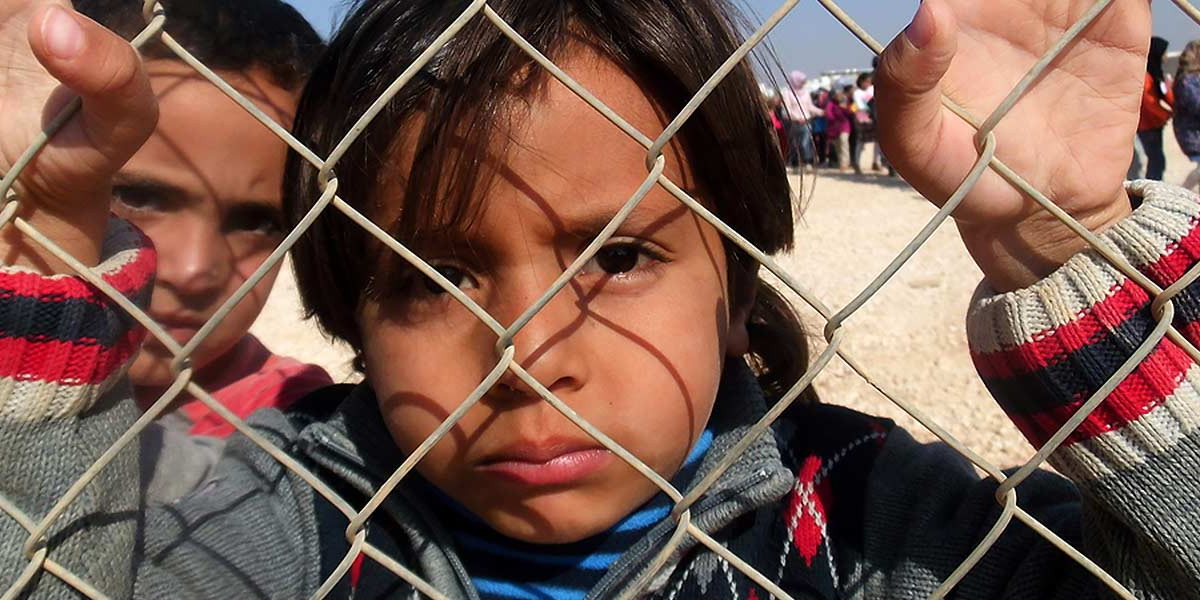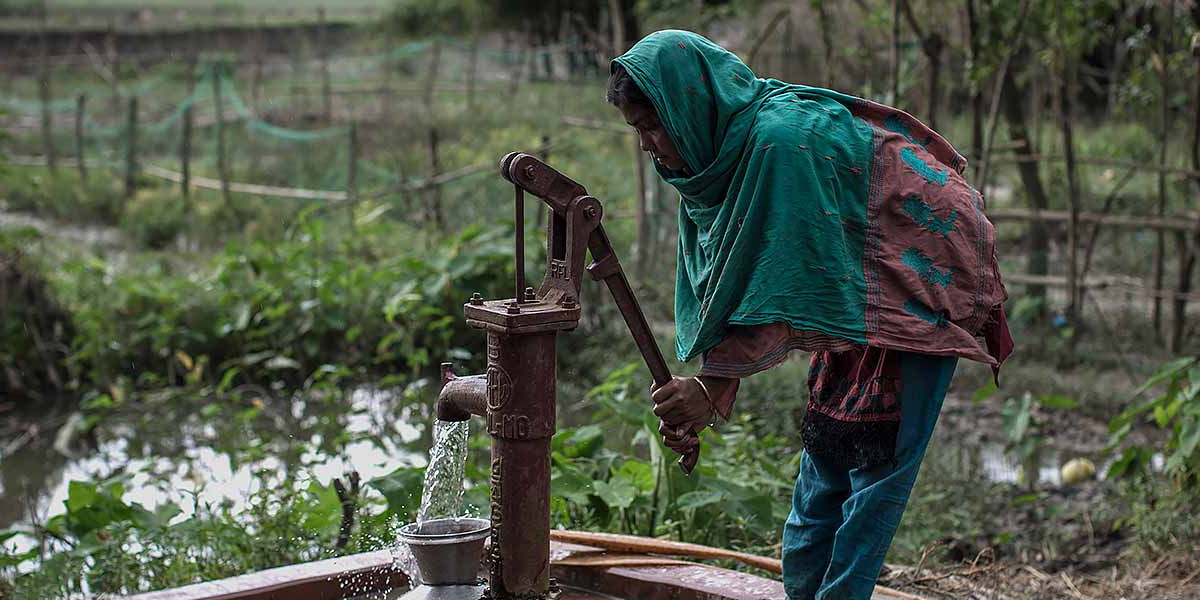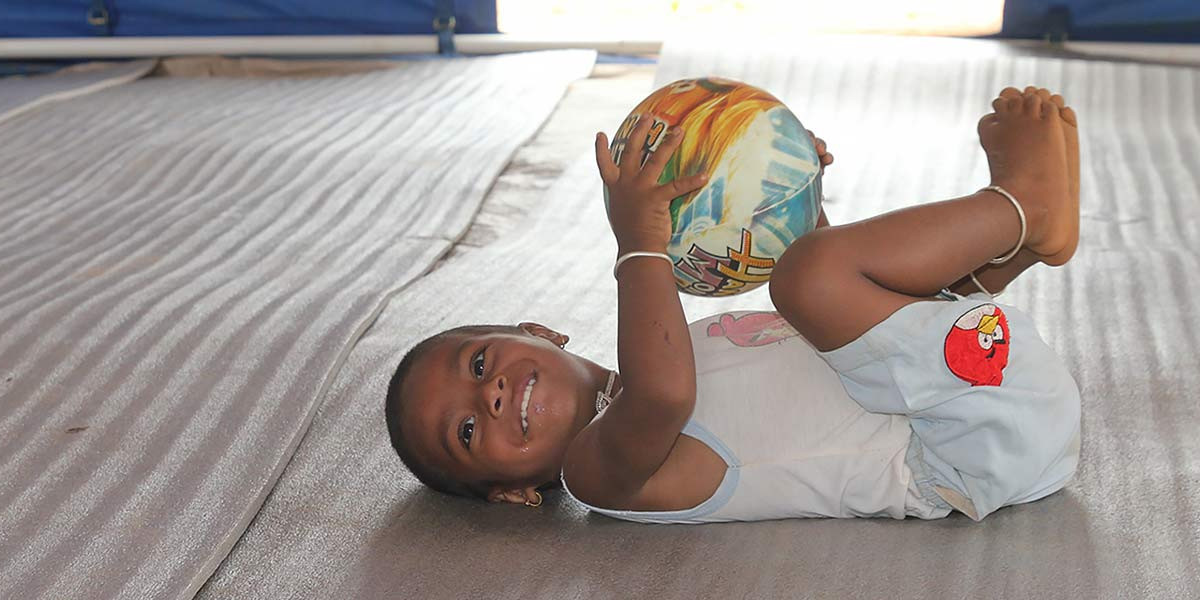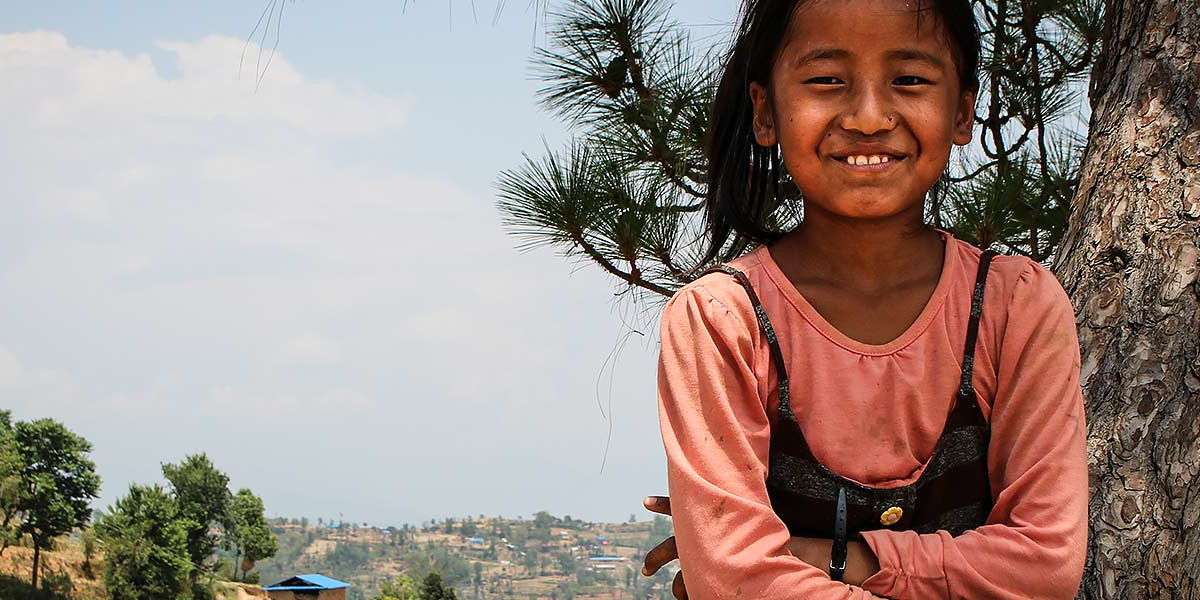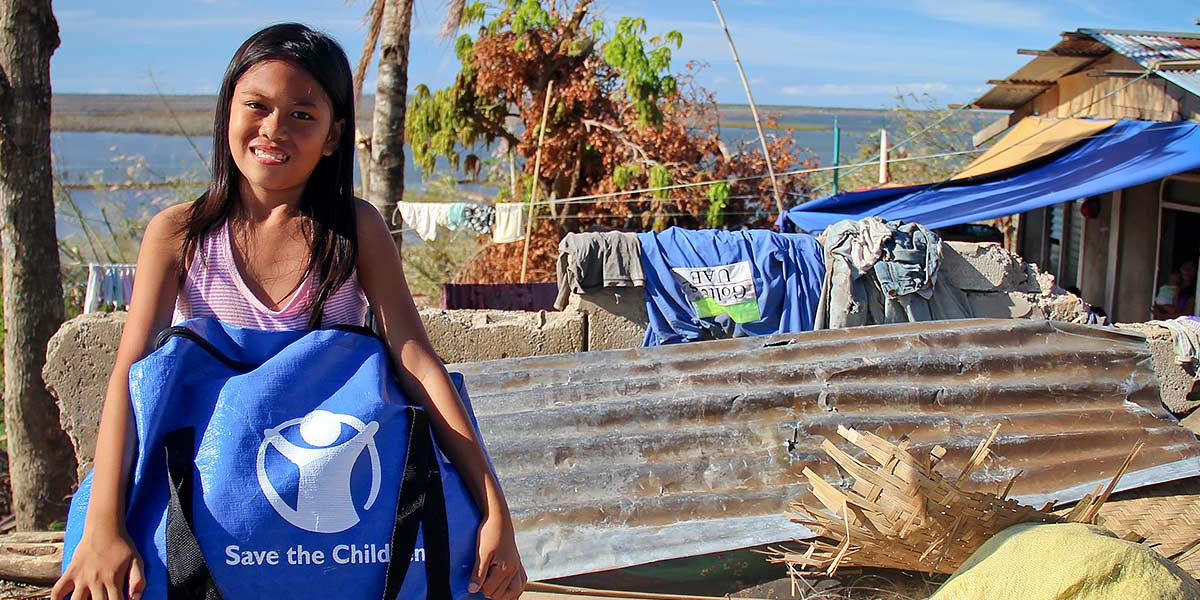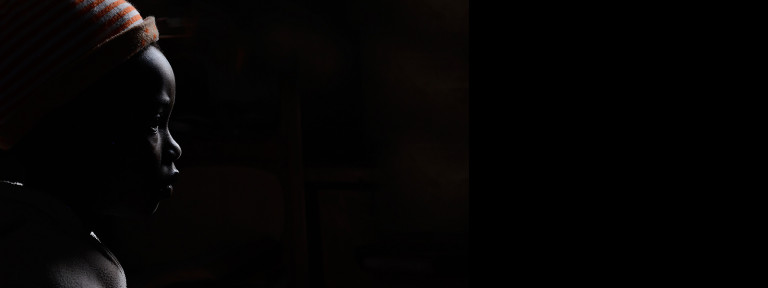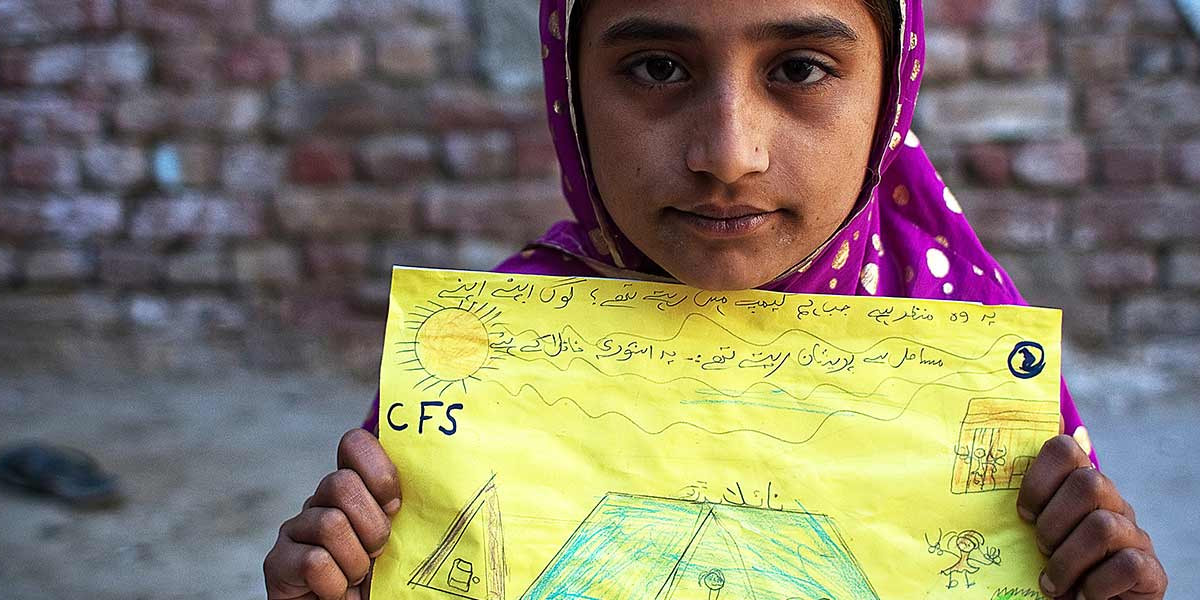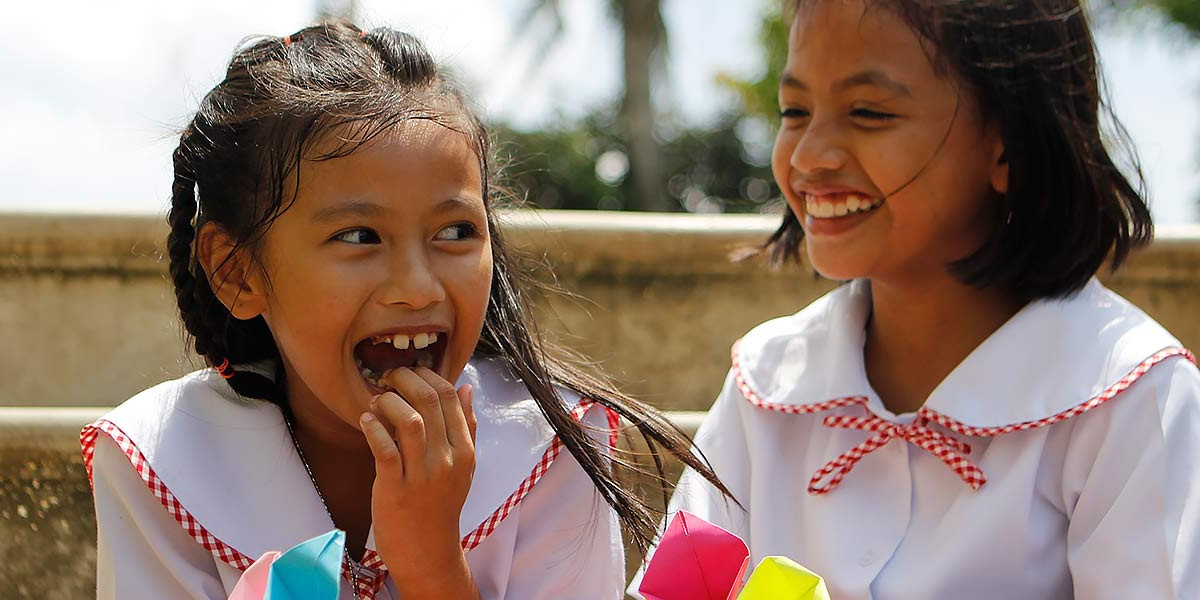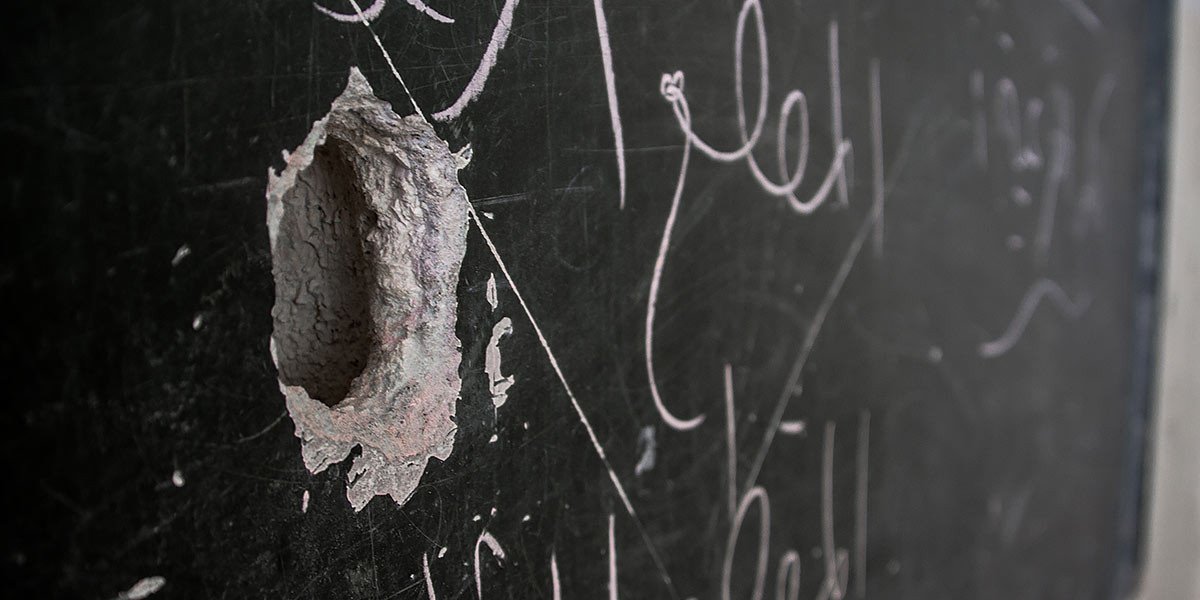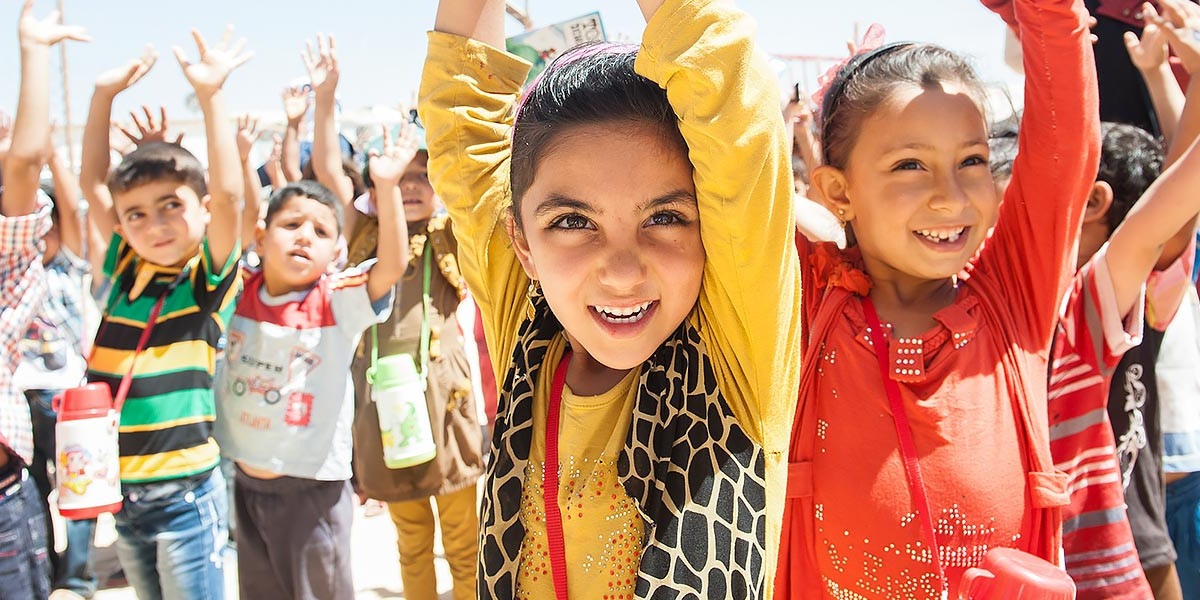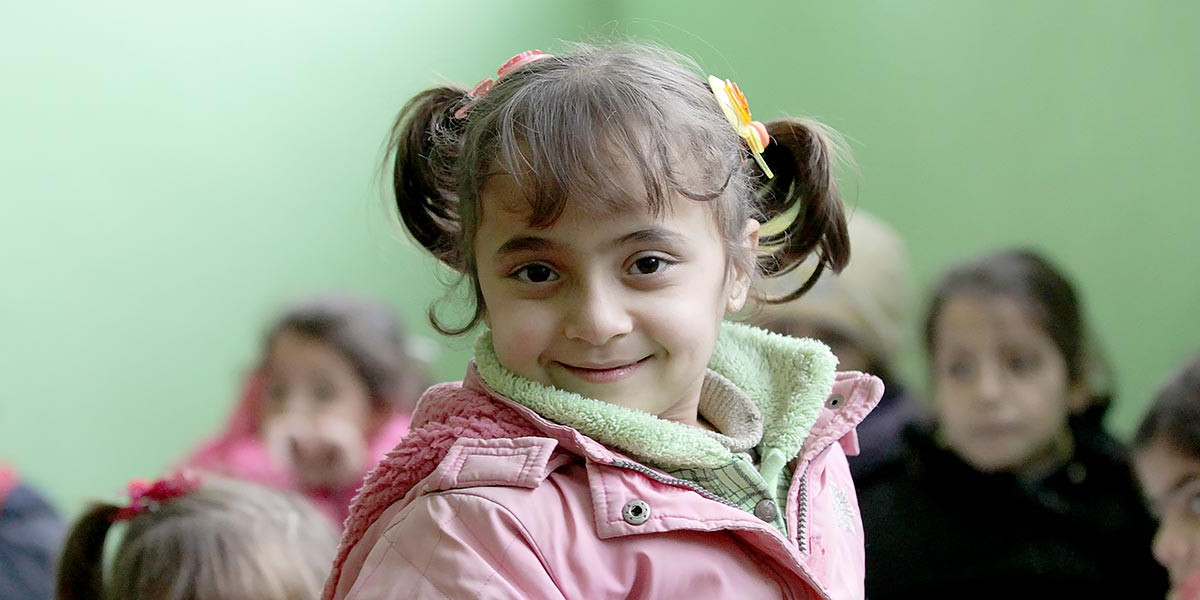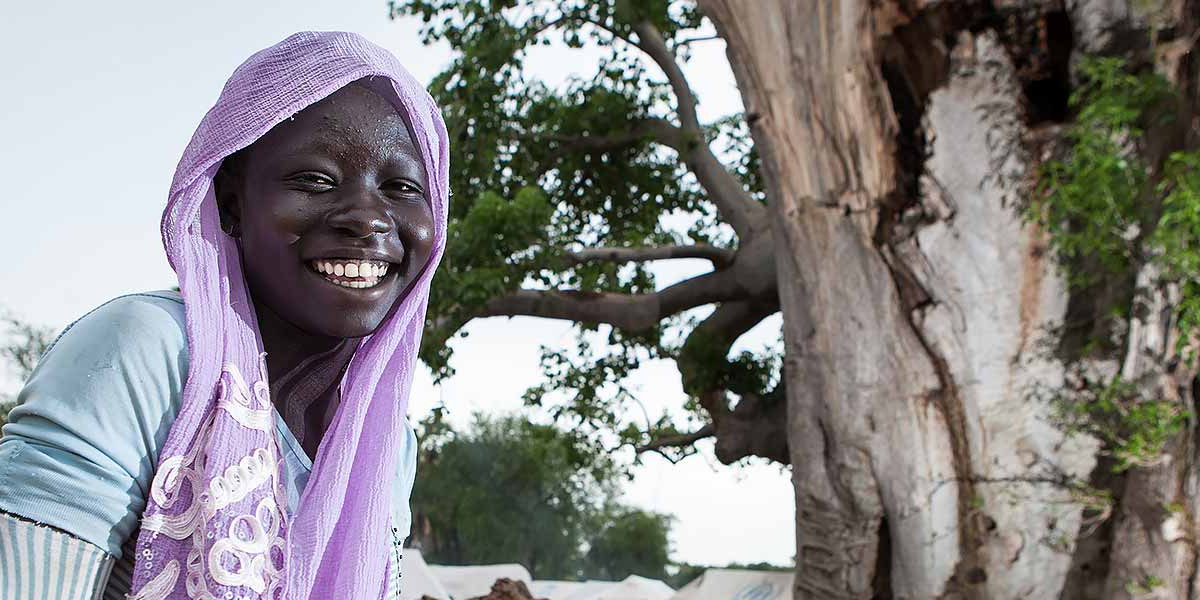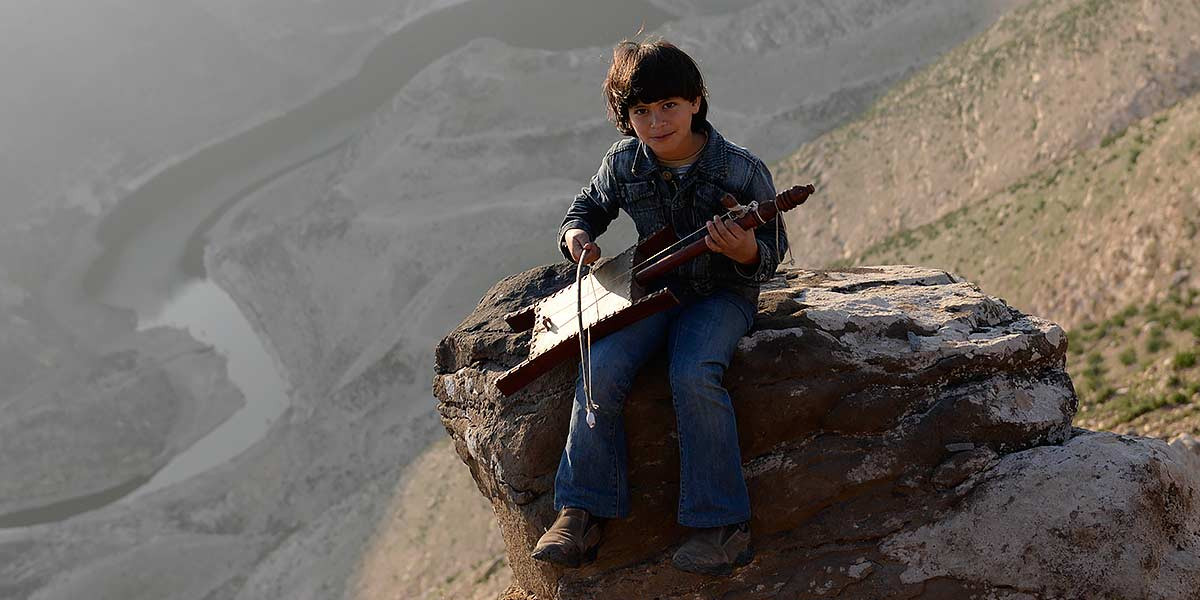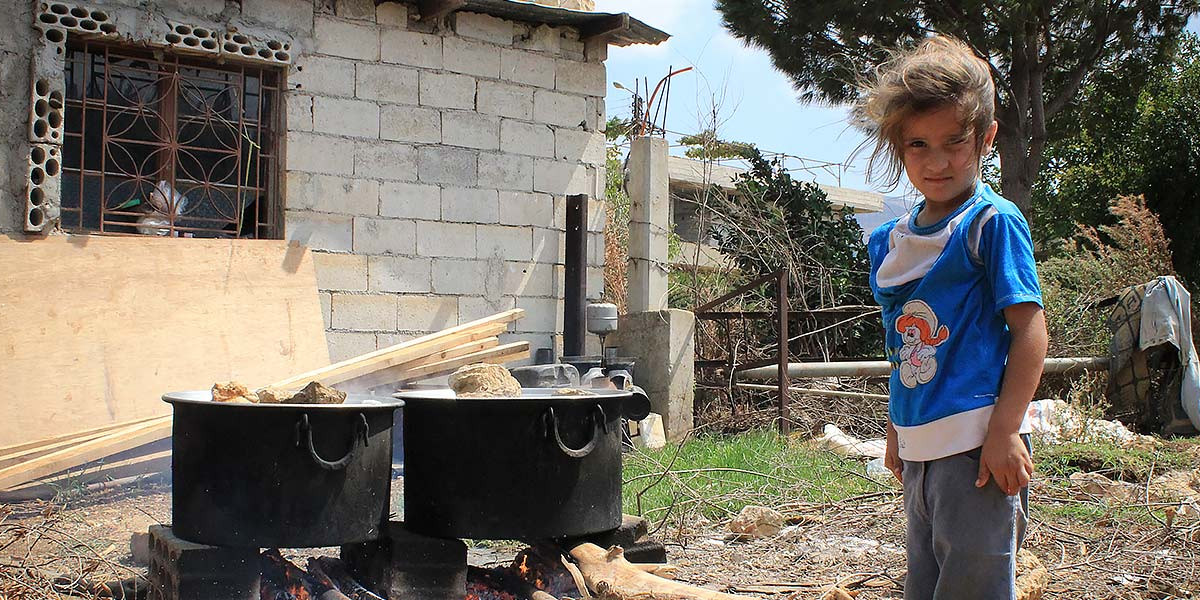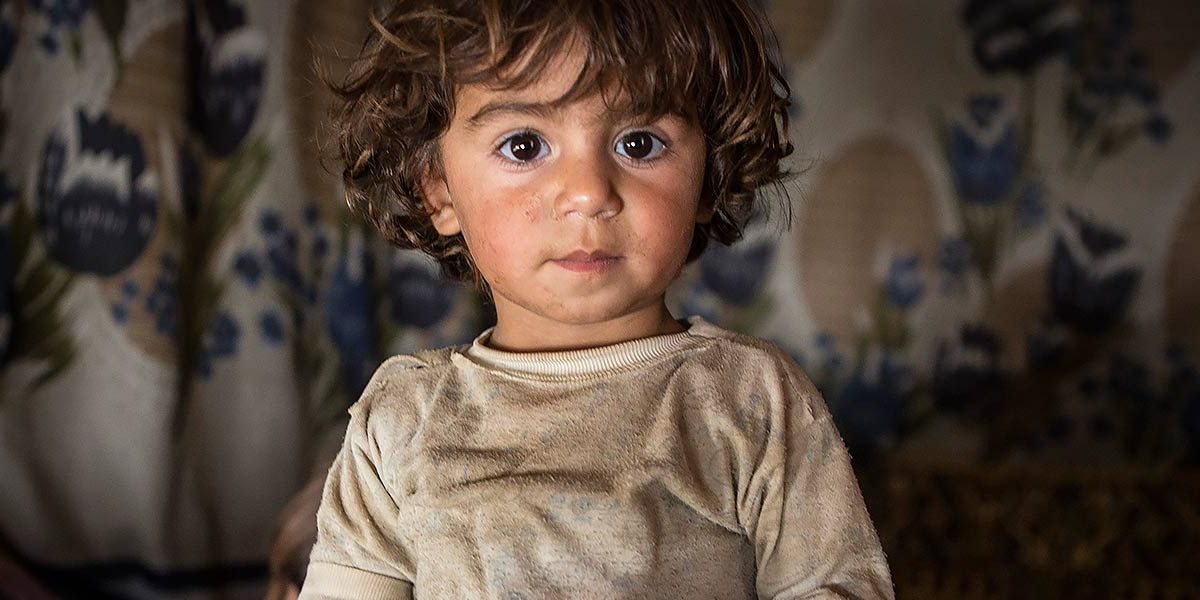Each year, with the help of our supporters, Save the Children reaches millions of children affected by conflicts, disease, floods and cyclones. As well as saving lives, we help children and families to recover and rebuild their lives.
Since our first humanitarian response in 1919, Save the Children has helped generations of children across the globe, delivering emergency aid and rebuilding communities devastated by war and natural disaster. Today, more than a century later, we continue to do everything we can to protect children.
In 2019 alone, we helped 10.6 million children in crisis.
Rapid deployment of lifesaving aid
In the immediate aftermath of a disaster, children and families need food, water, shelter, and medical aid. In the first hours and days after a major disaster, Save the Children concentrates on meeting these basic needs – to help keep families alive and safe.
Our rapid response teams are based all around the world, allowing us to deliver lifesaving supplies, care and protection anywhere, and quickly. We know from experience that the faster we can respond, the more lives we can save.
Transporting goods into a country after an emergency can be difficult – there are often delays before planes can land, or trucks can get through. Save the Children stores emergency supplies in warehouses around the world, so we can move equipment to where it’s needed as soon as possible.
As well as immediate food and water supplies, Save the Children provides blankets, mosquito nets, plastic sheeting, torches, cooking equipment, mattresses and other essential household items to families to keep them safe.
Keeping children safe from harm
In the chaos caused by conflict and disaster, children often become separated from their families, increasing their vulnerability.
Without swift action and adequate preparation, children caught up in emergencies are at greater risk of disease, starvation, trafficking, slavery, dangerous labour, sexual abuse, neglect and psychosocial trauma.
When disaster hits a community or country, we promote child protection, working with families, communities and governments to ensure that the most vulnerable children do not get forgotten in the chaos.
Safe spaces to play
When homes are destroyed, families are separated and everything that is familiar is left behind. Giving children a safe place to play becomes even more important.
During emergencies we set up child friendly spaces where children can play, socialise and begin the process of recovery. While children are struggling with what is unfolding around them, we help them look to the future, by giving them safe spaces to be themselves in.
Learning in the ruins
Today, 58 million children are out of school. Around half of these children live in conflict affected countries, with millions more forced out of education as a result of disasters such as earthquakes, floods or storms.
Resuming education as quickly as possible is essential to help children and communities cope with crises, helping to restore normality, stability, structure and hope for the future.
When children are forced out of school, often they do not return, condemning them to a future of poverty and hardship. That’s why providing a place to learn is a core part of Save the Children’s emergency response.
In emergencies, we partner with UNICEF to co-lead the education cluster for the Inter-Agency Standing Committee (IASC). We work with local governments, communities, parents, children and teachers to ensure that learning spaces are established or restored, teaching materials are provided, relevant teacher training and support is provided, so that children are able to continue their education as quickly as possible.
On the move
A generation of children are on the run. They are fleeing with their families in unprecedented numbers, creating the highest level of displacement since World War II. Forced to run from conflict and persecution in Syria, Afghanistan and Iraq, the world is witnessing a rapid escalation in the number of people seeking safety from suffering in countries across the world.
Approximately half of the 19.5 million registered refugees globally are children and young people. The numbers are growing dramatically as a result of escalating crises in places where violence, persecution and conflict are uprooting entire populations.
Out of fear for their lives, children are forced to embark on perilous journeys. They hope for the chance of a better life and the opportunity for asylum. But while they are on the move, they are extremely vulnerable.
Being prepared
We can’t stop hurricanes, earthquakes or floods, but we can help children and their families be prepared when they strike.
Save the Children is committed to building the capacity of devastated communities so that they can recover, rebuild and be prepared for future disasters.
This is because we know that trained local people, equipped with the right skills, are the most effective and efficient way to respond to emergencies, save more lives, and build stronger communities.
Children are the most vulnerable in a disaster, as they often do not know where to go or what to do – they rely on their families and communities to keep them safe. This exposes them to greater danger, as they may become separated from the adults who care about them.
Save the Children work alongside children, their teachers, communities and local governments to establish inclusive and technical community disaster planning. Our child-led disaster risk reduction programmes ensure children are actively participating, and become capable and confident in their ability to respond to and cope with disaster.
Reducing the risk of disaster by involving the whole community means everyone is aware of local hazards and vulnerabilities, and knows what the plan is before a crisis occurs.
Being prepared also means ensuring adequate food and water supplies are in place to ensure a speedy recovery. Around 75 percent of people living in developing countries rely on natural resources for their livelihood. Reoccurring disasters and unpredictable weather due to the changing climate increase the vulnerability of these families and their children.
We are working with communities to build resilience during and after disasters by training local farmers in sustainable livelihoods and food security.




